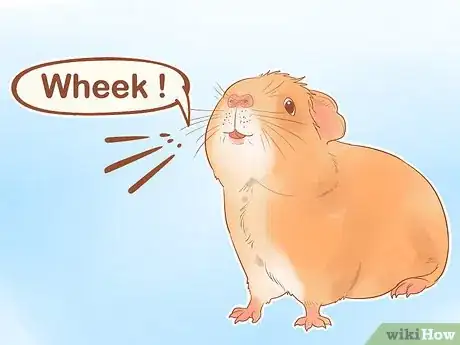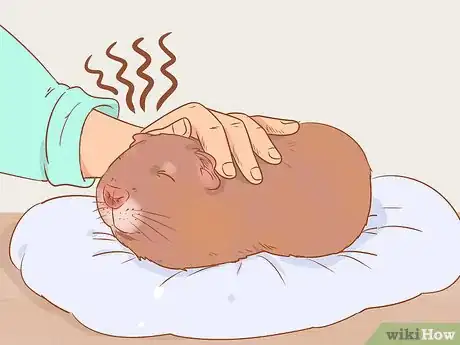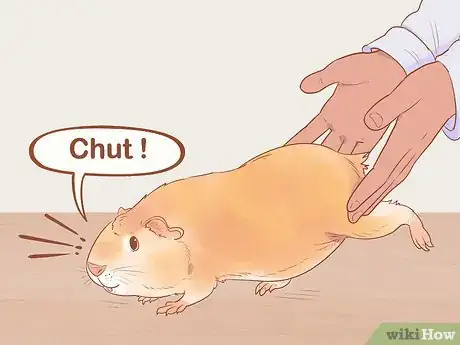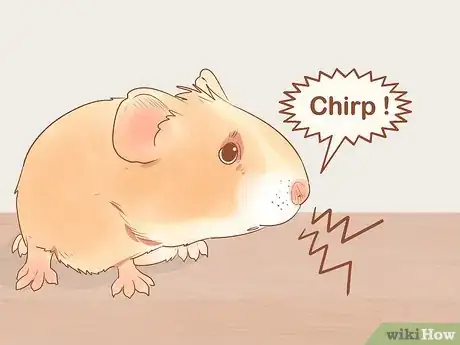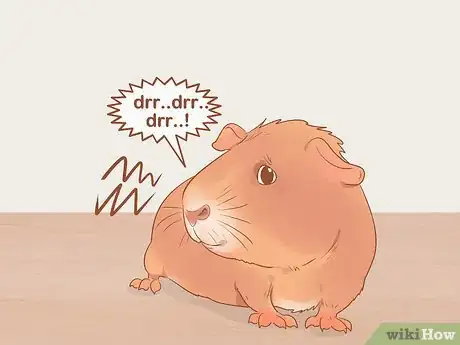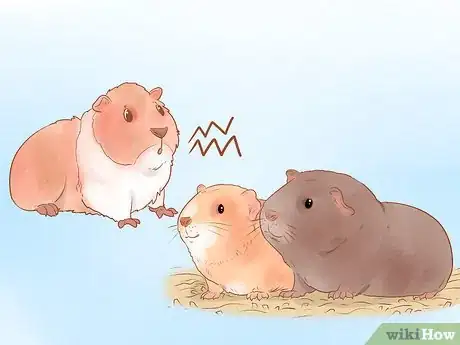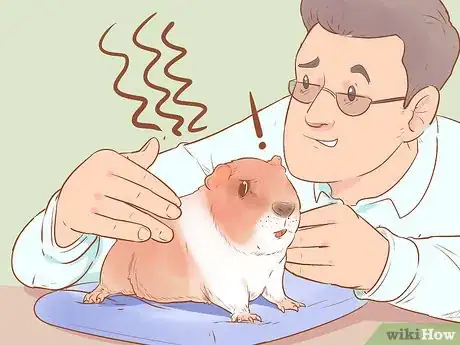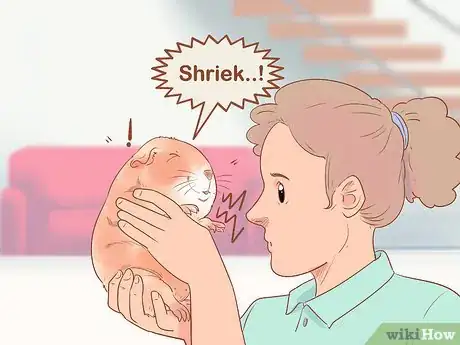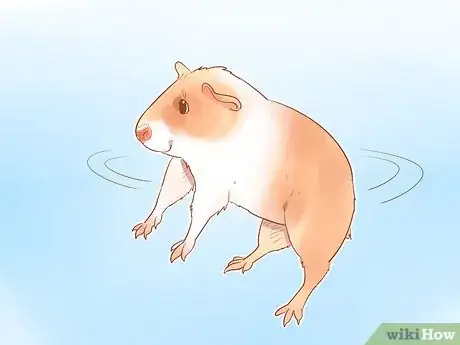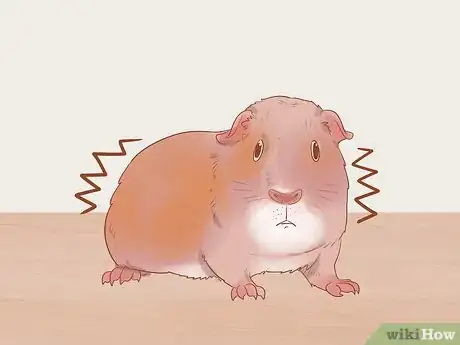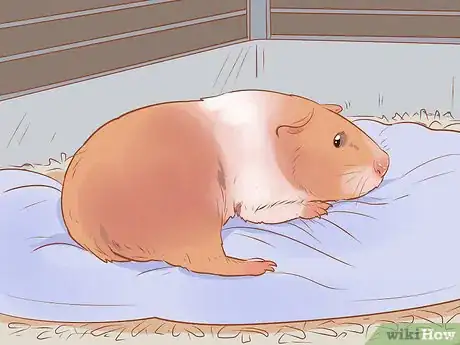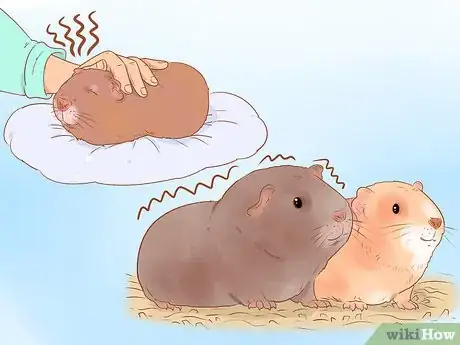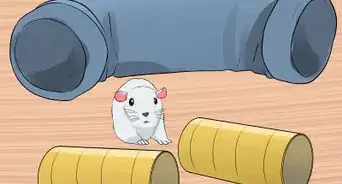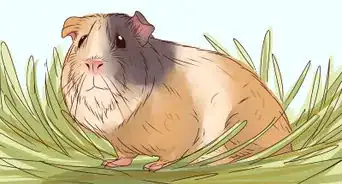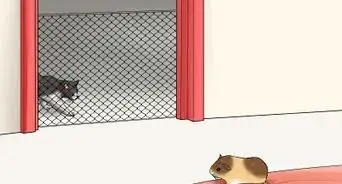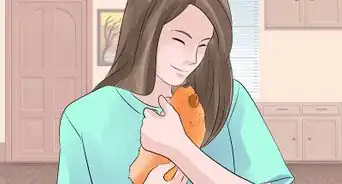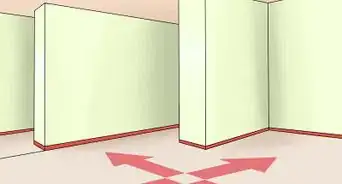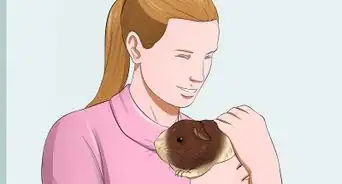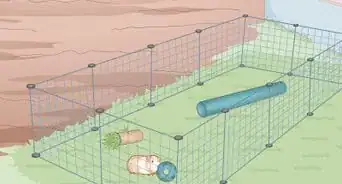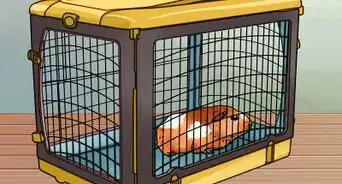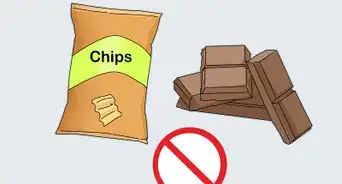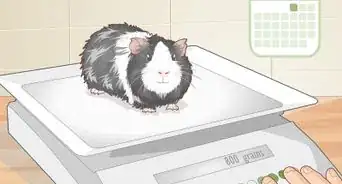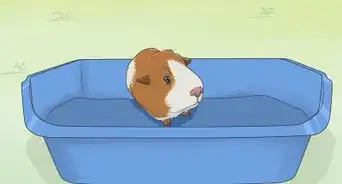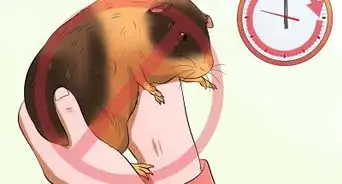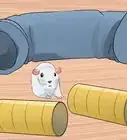This article was co-authored by Pippa Elliott, MRCVS. Dr. Elliott, BVMS, MRCVS is a veterinarian with over 30 years of experience in veterinary surgery and companion animal practice. She graduated from the University of Glasgow in 1987 with a degree in veterinary medicine and surgery. She has worked at the same animal clinic in her hometown for over 20 years.
There are 14 references cited in this article, which can be found at the bottom of the page.
wikiHow marks an article as reader-approved once it receives enough positive feedback. This article received 11 testimonials and 93% of readers who voted found it helpful, earning it our reader-approved status.
This article has been viewed 61,588 times.
If you have a guinea pig as a pet, of course you want to know what your guinea pig is trying to tell you! Guinea pigs make a variety of sounds to show both happiness and displeasure, and they may use them to beg for food or to tell you to stop what you're doing. If you take the time to listen to your guinea pig, you should be able to decipher what your guinea pig wants most of the time.
Steps
Learning the Happy Sounds
-
1Listen for "wheeking" or whistling to let you know it's excited. This sound is also referred to as "squealing." The guinea pig may make this sound when there's food coming its way or if it sees you. In other words, its a sound that means it's happily anticipating what's about to happen![1]
- It's called "wheeking" because it sounds like the word.
- Your guinea pig may use this noise to beg for food, especially if it hears a noise that means food could be on the way, such as the refrigerator opening or bags crinkling.
-
2Expect a purring noise when your guinea pig is happy. Just like cats, guinea pigs will make a purring noise when they're content with what's going on. With guinea pigs, it's a low, rumbling sound that stays fairly consistent, unlike a cat, who's purr may go up and down in vocalization.[2]
- You may hear this sound when you're feeding it or petting it, for instance.
- Be careful to distinguish this sound from the "drrr, drr" sound below.
Advertisement -
3Interpret "chut" noises as happy, exploring noises. This sound is very short and sweet, and your guinea pig will likely make it when it's wandering around and checking out things. You may hear it when you let it out of its confined area, for instance, and it's able to explore a larger area.[3]
- You might also hear this noise when your pet is checking out a new toy.
Understanding Unhappy Sounds
-
1Pay attention to chirping, which indicates a startled guinea pig. Not every guinea pig will make this noise, but when it does, it sounds very similar to a bird chirping. Usually, a guinea pig will make this noise if something startles it or it's afraid of something.[4]
- Other guinea pigs may take this as a warning sound and freeze.
-
2Pay attention to the angry teeth chatter. The guinea pig may squeak while it chatters its teeth up and down. Typically, this noise is an angry one. For instance, it may happen if you place a new guinea pig in the cage.[5]
- The squeaks that accompany this teeth chattering will sound angry. It can sound like hissing.
-
3Interpret a "drrr, drr" noise as a growl. A guinea pig growl doesn't really sound like what a dog or cat would make, but they do make a noise when they're feeling threatened. Your guinea pig may make a "drr, drr, drr" noise to indicate its unhappy.[6]
- Try petting your guinea pig and speaking to it in a gentle voice when it makes this sound.
- If your guinea pig is making this noise when being pet, they are telling you that they have had enough petting for now.
-
4Notice chutting accompanied by whining to know it's unhappy. While chutting alone is typically a happy sound, if you hear whining noises with it, your guinea pig is probably upset. The guinea pig is telling you or another guinea pig that it wants whatever's happening to stop.[7]
- Guinea pigs may make this sound when one is pursuing the other, and either guinea pig may make it.
-
5Stop what you're doing if you hear a purr that gets higher at the end. You may hear this sound when you're petting your guinea pig, and it doesn't like what you're doing. It's similar to a purr, but it changes in tone at the end. You may also notice that your guinea pig tenses up at the same time.[8]
- For instance, some guinea pigs don't like to be pet down their back. They may make this noise when you hit their tailbone.[9]
-
6Respond immediately to loud shrieks. Your guinea pig can make loud shrieking noises, and usually, it's a fear or pain response. Check on your guinea pig if you hear this noise, as it could mean it's in trouble.[10]
- This noise could also be described as squealing.
Interpreting Guinea Pig Behavior
-
1Watch for popcorning to know your guinea pig is happy. This behavior is a playful, excited one where your guinea pig bounces around and runs back and forth, making little leaps in the air. Younger guinea pigs will bounce higher than older guinea pigs, but most of them will exhibit this behavior.[11]
- This can show they're excited about something, like a treat, or it can just mean they want to play.
-
2Notice if your guinea pig freezes out of fear. When your guinea pig sees something it is afraid of, it will usually freeze in place. This is a natural reaction, and it also tells the other guinea pigs nearby that something is wrong.[12]
- Your guinea pig may make a little vibrating noise as it freezes.
-
3Look for signs of stress or boredom. Your guinea pig may groom more than usual or chew the cage bars. It may also hide, drink more than normal, or have changes in its eating or bathroom behavior.[13]
- You may also notice your guinea pig is lethargic or is making loops around the cage.
- This behavior can indicate an injury, but it also may mean your guinea pig is bored. It may need more time outside the cage or more toys to keep it entertained.
-
4Expect your guinea pig to rub its cheeks against things to mark them. In this way, your guinea pig is acting much like a cat. It has scent glands in its cheeks and face, and it rubs it against things in its environment to leave its scent behind.[14]
- It may also use its rear end for this purpose.
-
5Pay attention if your guinea pig wants to be put down. When you're holding your guinea pig, it may give you signs that it's done being held, such as fidgeting a lot. Alternatively, it might lift its head up, especially if you're petting it. That lets you know it wants you to stop petting it.[15]
- On the other hand, licking you can be a good sign.
-
6Differentiate a "rumble" from a purr by watching your guinea pig. A rumble sounds a lot like a purr, except its usually louder. It's only made by males, and it's typically used when courting females.[16]
- You may also notice your guinea pig trying to dance for a female. Typically, the dancing consists of the guinea pig wiggling his back end back and forth.
-
7Take your guinea pig to the vet if you hear wheezing and sneezing. If your guinea pig is wheezing, it could indicate sickness. Look for other symptoms to know for sure. You may also notice a rough coat, hair loss, tiredness, and crusty eyes.[17]
- Also, a sick guinea pig will likely refuse to eat or drink, and it may have bloody urine or loose stools.
- Your guinea pig may also make coughing noises.[18]
References
- ↑ http://www.guineapigmanual.com/guinea-pig-sounds/
- ↑ https://www.wideopenpets.com/do-you-know-what-your-guinea-pig-is-trying-to-tell-you/
- ↑ https://www.wideopenpets.com/do-you-know-what-your-guinea-pig-is-trying-to-tell-you/
- ↑ http://www.guinealynx.info/behavior.html
- ↑ https://www.wideopenpets.com/do-you-know-what-your-guinea-pig-is-trying-to-tell-you/
- ↑ https://www.wideopenpets.com/do-you-know-what-your-guinea-pig-is-trying-to-tell-you/
- ↑ http://www.guineapigmanual.com/guinea-pig-sounds/
- ↑ http://www.guineapigmanual.com/guinea-pig-sounds/
- ↑ http://www.guinealynx.info/behavior.html
- ↑ http://www.guineapigmanual.com/guinea-pig-sounds/
- ↑ http://www.guineapigmanual.com/guinea-pig-behaviour/
- ↑ www.guineapigmanual.com/guinea-pig-behaviour/
- ↑ https://www.rspca.org.uk/adviceandwelfare/pets/rodents/guineapigs/behaviour
- ↑ www.guineapigmanual.com/guinea-pig-behaviour/
- ↑ www.guineapigmanual.com/guinea-pig-behaviour/
- ↑ https://www.wideopenpets.com/do-you-know-what-your-guinea-pig-is-trying-to-tell-you/
- ↑ https://www.petfinder.com/pet-care/small-and-furry-care/guinea-pig-basics-illness-warnings/
- ↑ http://www.guineapigmanual.com/guinea-pig-sounds/
About This Article
To understand guinea pig language, listen for a "wheeking" sound, which means the guinea pig is happy and excited. Guinea pigs also make a low, rumbling sound when they're happy, which sounds like a cat's purr. If you hear a short "chut" sound, this usually means the guinea pig is exploring the area happily. However, chutting accompanied by whining means it's unhappy. Chirping sounds typically indicate that the animal is startled or afraid. For tips on interpreting more guinea pig sounds, read on!
